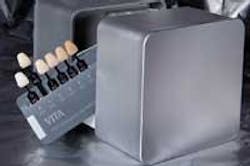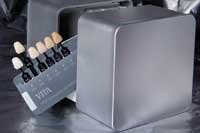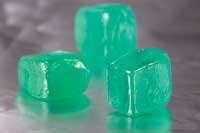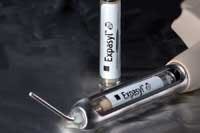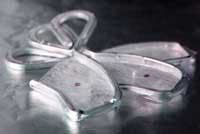Four products for better crown and bridge
by Michael DiTolla, DDS, FAGD
VITA Linearguide 3D–Master
Dentists really seem to be in love with the VITA Classical Shade Guide, not that it is necessarily their fault. The VITA Classical is the shade guide that every dentist has used since day one, except for a few of us old guys who remember the Bioform shade guide that was a mile long. Despite VITA issuing better shade guides, such as the Linearguide 3D–Master, dentists still want to stay with the familiar — even if it might be more difficult to use. The Linearguide makes accurate shade–taking simple with two quick steps that are faster for me than the VITA Classical system. First, grab the portion with the six tabs and determine the closest value to the tooth to be matched. This is very straightforward and hard to get wrong. If the value number happens to be 3, take out set 3 of the hue/chroma tabs and pick the closest one. In the lab, most of the missed shades are due to incorrect values. The Linearguide 3D–Master is a big step in the right direction for correcting this problem.
For more on this topic, go to www.dentaleconomics.com and search using the following key words: crown and bridge, shade guide, two–cord impression technique, Dr. Michael DiTolla.
Richwil Crown & Bridge Remover
Richwil Crown & Bridge Remover goes by many other names. The most common is probably the “Jujubee thingy.” You won't be in practice long before you need some Richwil's. Whether it's a crown with tight contacts or an inlay with near vertical walls, you are going to have trouble removing a restoration that is only being tried in at that point. When this happens, you will want to have some of the “sticky green cubes” around. Simply hold one under warm tap water for a minute or two, push it onto the occlusal surface of the restoration you want to remove, have the patient bite down until the Richwil compresses about halfway, then spray it with some cold water or air. After cooling, have the patient pop open, and it's time to cement. Even if you only need these removers a couple of times per year, it's a good idea to have them on hand.
Strawberry flavored Expasyl™
If you read this magazine or watch Glidewell's DVDs, then you know that I am a big fan of the two–cord impression technique. But there are times when placing the second (top) cord is dangerous due to thin, friable tissue or a lack of attached gingiva. Cord–packing should not resemble perio surgery, but if you stick to the two–cord technique in all situations (some maxillary first bicuspids and lower anteriors come to mind), you might end up damaging the epithelial attachment. In these cases, I go with Expasyl™ on top of the bottom size 00 cord, and rinse it out after two to three minutes. I also love the product for those times when the tissue is irritated next to a crown seat. I place Expasyl™ with the patient biting on a cotton roll, rinse two minutes later, and cement into a blood–free site thanks to its aluminum chloride styptic properties. With its new strawberry flavor, patients will also like the taste.
QUAD–TRAY® Xtreme™
The QUAD–TRAY® Xtreme™ is definitely on my list of products that I would not want to practice without. I am not sure what took me so long to get it onto these pages. Perhaps I have just started to take it for granted. Maybe it is because it gets covered with impression material quickly and is not heard from again. But from the looks of the double–arch tray cases coming into the laboratory, many of you like it, too. Almost one–third of our cases are taken with this product. Clinician's Choice improved the original QUAD–TRAY® by making the distal bar 25% thinner to help make room for the retromolar pad. This is a big problem area for plastic double–arch trays. A shorter lingual wall keeps the tray free from the patient's anterior teeth. This is another common cause of plastic double–arch tray distortion. The QUAD–TRAY® Xtreme™ is now the No. 1 selling aluminum, double–arch impression tray in the world, and has been my exclusive double–arch tray for the last seven years.
To have Dr. Michael DiTolla speak at your next study group or dental society, contact him at [email protected]. For more information, visit www.drditolla.com or www.glidewelldental.com.
